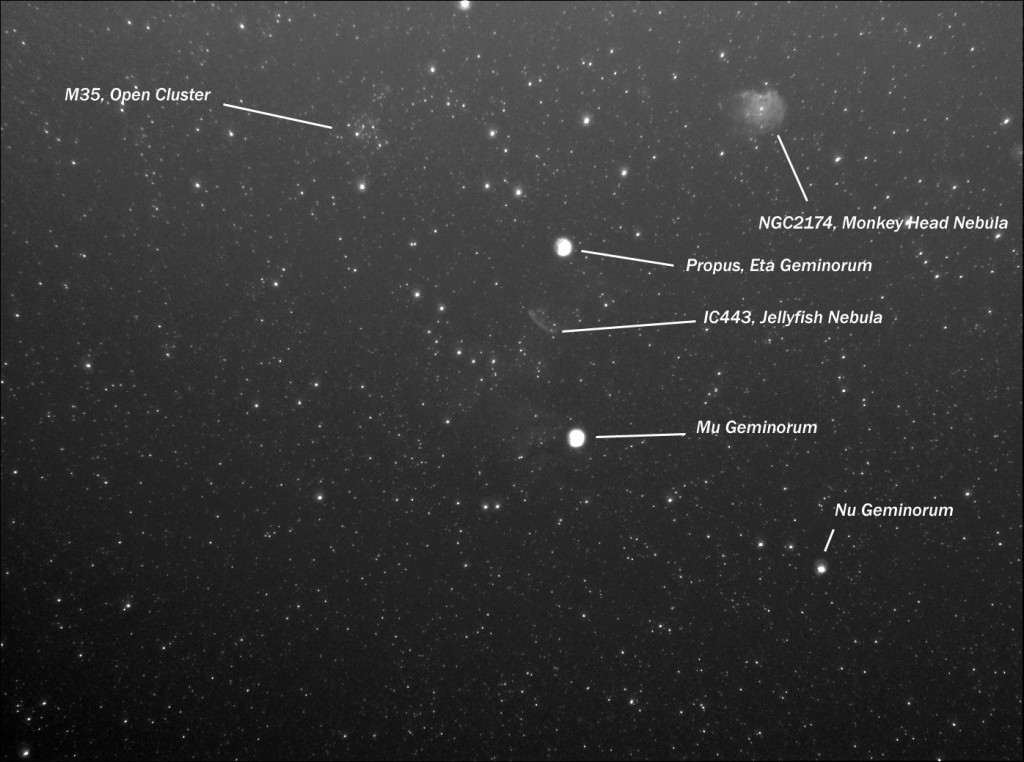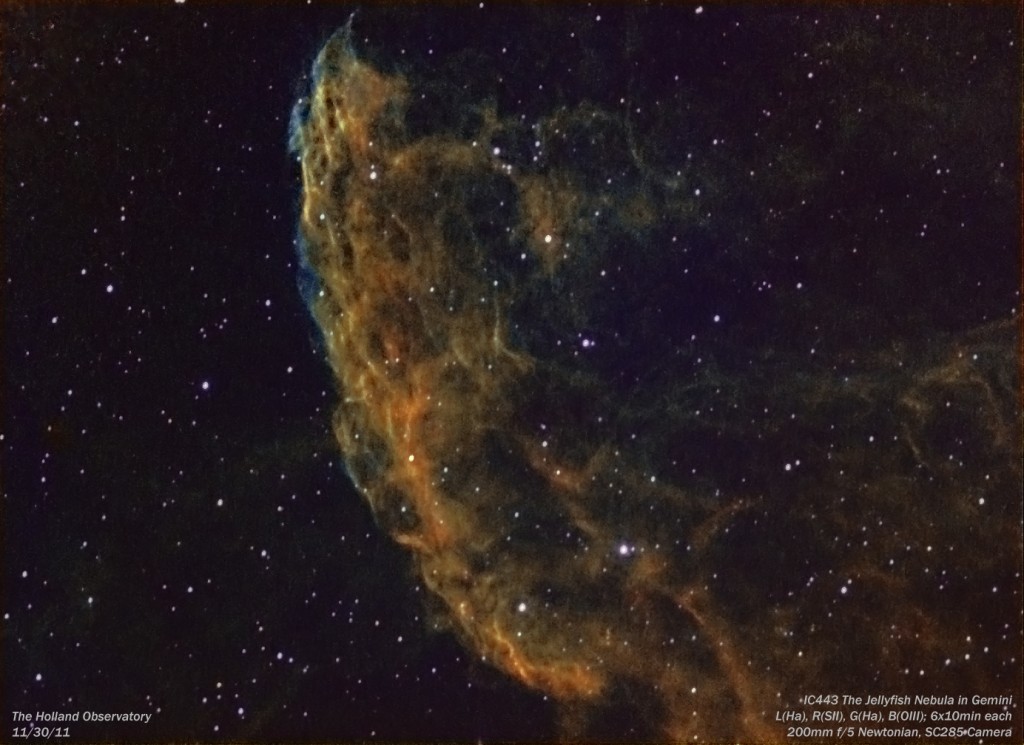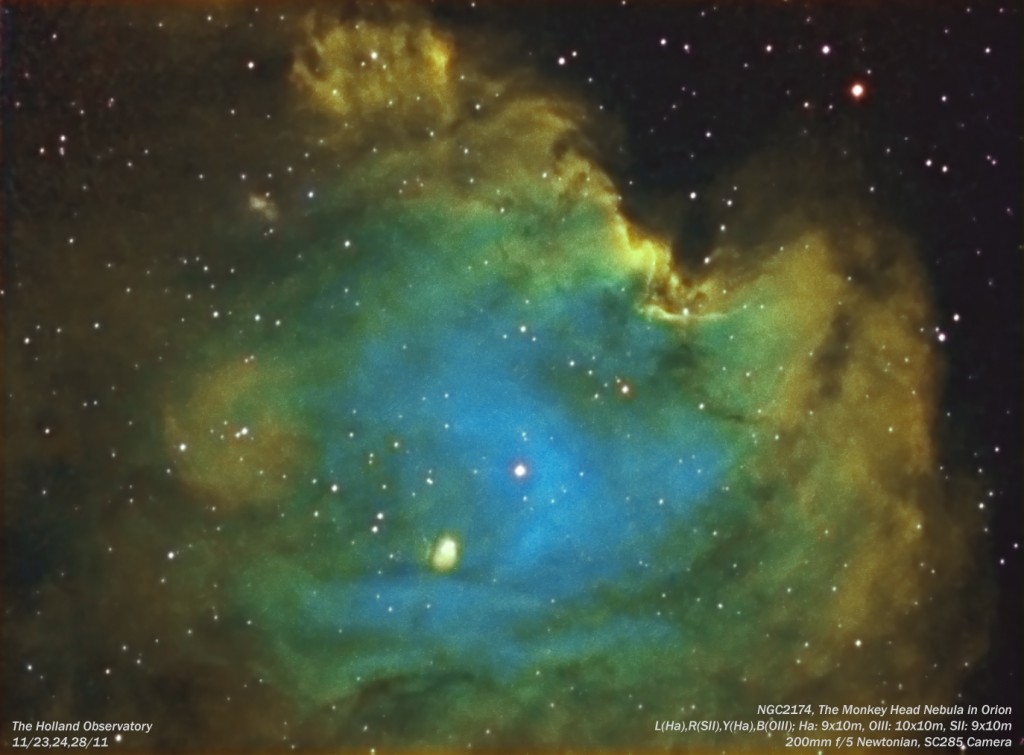Southern Gemini / Northern Orion Area:
Imaging Information: Southern Gemini / Northern Orion Region in Ha with a 50mm lens providing a wide field of view, approximately 10 degrees horizontally.
Full resolution .tif:
Imaging Information: The Southern Gemini / Northern Orion region was originally imaged in Ha (Hydrogen Alpha, 656.3nm) with a 50mm lens providing a wide field of view (see image above). IC443 did not show up as a bright object. But when imaged with a 200mm f/5 telescope, the object was fairly bright in Ha and SII (Sulfur). There was very little OIII (Oxygen). The luminance and green channel are Ha, red is SII, and blue is OIII. The blue has been adjusted to turqoise to better emulate the actual color of OIII, and green has been transitioned to gold / yellow to help provide better contrast with the blue OIII signal.
Object Information: IC443, also known as Sh2-248 and the Jellyfish Nebula is located in Gemini. It is a supernova remnant located about 5000 light years from Earth. It emits energy in the X-Ray region as well as visible light. The same supernova event likely created the neutron star CXOU J061705.3+222127, the collapsed remnant of the stellar core. IC 443 is seen here as a good example of a supernova remnant interacting with surrounding molecular clouds.
Full resolution .tif:
Imaging Information: When imaging the Southern Gemini / Northern Orion region in Ha with a 50mm lens providing a wide field of view, NGC2174 was found to be very bright. This object was bright in both Ha and OIII when imaging with a 200mm f/5 Newtonian telescope. There was less SII, but also each attempt at SII had poor matching calibration dark frames. Alternate SII will be attempted in the future. The luminance and green channel are Ha, red is SII, and blue is OIII. The blue has been adjusted to turqoise to better emulate the actual color of OIII, and green has been transitioned to gold / yellow to help provide better contrast with the blue OIII signal.
Object Information: NGC2174, also known as the Monkey Head Nebula is located in Orion. The area also contains the open cluster NGC2175. It is an emission nebula located about 6,400 light years from Earth. The nebula covers an area in the sky which is larger than the full Moon. The radiation from the massive stars in the nebula are evaporating and dispersing the dark interstellar dust which surrounds the stars. The shape of the nebula is a result of this process.


